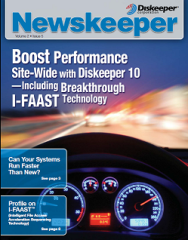 Companies that use content marketing convert 6x more* than companies that don’t have content on their websites.
Companies that use content marketing convert 6x more* than companies that don’t have content on their websites.
Got your attention, didn’t I?
Let’s face it: you need some content for your business. Why? Well, why not?
Currently, you have nothing on your website save a good home page where you present your products, an about page, news page and a contact page. No content.
“But…I’m not a writer!” you protest.
No excuse. You know your product best, and you have answers to questions that your clients and prospects are wondering about RIGHT NOW.
Your (future) content will foster engagement with prospects, create trust, relationships and future sales. So get to writing!
“But, but, I–“
Need help? I just happen to have some very handy suggestions. In fact, they’re right here, available on the interwebs, easily accessible, readable and written by leaders in content marketing. Here you go:
First things first. What the heck to write about?
It can be challenging to come up with topics to write about, especially if you are not a writer. That’s where this resource from Problogger.com comes in handy. Author Karol K. outlines no less that 52 different types of blog posts that work. Should be enough to get you started on a few ideas!
Next, your article needs an outline!
How do you start writing your awesome blog article idea? This detailed how-to from Pamela Wilson of Big Brand  Systems will walk you through, from beginning to end, writing your article. Pamela’s step-by-step consists of four parts, so be patient, and you will be rewarded, grasshopper.
Systems will walk you through, from beginning to end, writing your article. Pamela’s step-by-step consists of four parts, so be patient, and you will be rewarded, grasshopper.
Oh, and because the internet is such a wealth of fantastic information, here’s another basic primer on writing blog articles–How to Write a Blog Post–The Ultimate Guide by Liz Longacre from Smartblogger.com. Check Liz’s how-to out if Pamela’s isn’t your speed.
SEO? What is THAT?
 Once you have written an article or two, and feel more confident, next item to add into the mix is optimization (the “O” in SEO: Search Engine Optimization).
Once you have written an article or two, and feel more confident, next item to add into the mix is optimization (the “O” in SEO: Search Engine Optimization).
What exactly is that? Simply put, it’s ensuring your content, once written and published, can actually be found when your article topics are searched through sites like Google.
Jeff Goins, one of my favorite writers and marketers, lays it all out for you (in the simplest of terms) in his article SEO Basics for Bloggers & Beginners. Pretty handy, right?
Promote, promote, promote!
 You’ve published. Well done. That’s it, right? Well, only if you don’t want anyone to read your content!
You’ve published. Well done. That’s it, right? Well, only if you don’t want anyone to read your content!
Next step is to promote your content yourself. Think social media, email newsletters and groups in forums like Reddit.
Roniece Wright gives you 5 Ways to Market Your Blog Post After You Hit Publish, from Bloguettes.com.
Black belt: the next stage of promotion
You’re up and running with your content. You’ve been writing articles for a few months now, and its part of your business routine. What to do now?
That’s easy: take your content and “repurpose” it. Transform your content–preferably the best performing–into “new” content.
 Your material can be turned into quotes and takeaways, graphics, hashtags, videos, infographics and so much more for social media promotion.
Your material can be turned into quotes and takeaways, graphics, hashtags, videos, infographics and so much more for social media promotion.
Brian Appleton’s How to Repurpose Blog Content Into Short-Form Social Media Updates on Socialmediaexaminer.com is a great go-to for this.
NOW you’re cooking with fire!
“Thanks Lisa!”
You’re welcome.
*from How to Win Your Battle for Content Marketing Buy-In (Content Marketing Institute)


 At all of my positions, I have either apprenticed, assisted, edited or created customer magazines (or newsletters) for my companies. At Diskeeper Corporation (now Condusiv), my “Newskeeper” customer magazine went out to our entire database–nearly 100K contacts,
At all of my positions, I have either apprenticed, assisted, edited or created customer magazines (or newsletters) for my companies. At Diskeeper Corporation (now Condusiv), my “Newskeeper” customer magazine went out to our entire database–nearly 100K contacts,  As recently as 2014 actual digital/online companies have gotten on board with the print magazine: CNET, WebMD and Net-a-Porter are distinctive tech companies who have jumped in with their own publications. Of course the luxury items have their snazzy magazines, like
As recently as 2014 actual digital/online companies have gotten on board with the print magazine: CNET, WebMD and Net-a-Porter are distinctive tech companies who have jumped in with their own publications. Of course the luxury items have their snazzy magazines, like 





